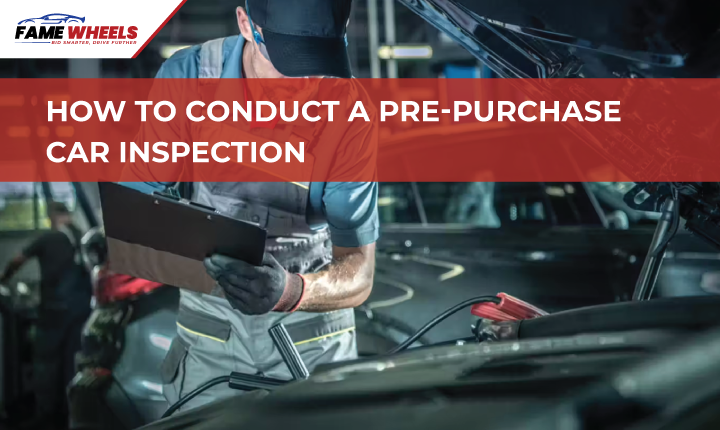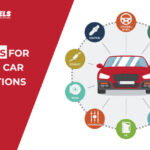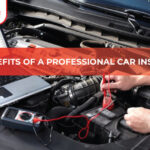Car purchase, whether of a new or used car is always a big investment. It is hence very important if you comply with our list of tips in this article to be able to carry out a pre-purchase car inspection successfully. It will be rather beneficial to have this inspection done as it can reveal some problems, one will not have to spend additional money, and in the end, make the right decision as to whether to buy or not to buy the property. Ensure your next car buying is safe and reliable with a comprehensive pre-purchase car inspection from FameWheels in Karachi. Below is a detailed protocol on how to go about a pre-purchase car inspection.
Why Conduct a Pre-Purchase Car Inspection?
Pre-purchase car inspection is used to check the condition of the car before purchasing it to make a final decision. It can help diagnose some issues which might not easily be noticed for whatever reason and give a much better perspective of the health of the car. This process is very essential to avoid being a victim of inheriting other people’s issues and not getting value for your money.
Preparing for the Inspection
1. Do Your Research
It is advisable to do preliminary research on the particular make and model of the car. Search for the frequent problems, recall information and any service requirements.
2. Arrange for a Safe Location
The general requirements entail making sure the car inspection is conducted in a well-lit safe area that is dry. If possible, hold the car in a flat plane that will enable you to inspect different regions of the car without interference.
Step-by-Step Pre-Purchase Car Inspection
1. Exterior Inspection
Body Condition: Check for signs of minor accidents such as dent, scratch, rust or differing shades of colour of the car.
Frame: Search for any signs of damage there or welding done on the vehicle. This could be a sign of a previous accident.
Lights and Lenses: Check all front and rear lights including the headlight, rear light, turning indicators and brake light
2. Interior Inspection
Seats and Upholstery: Make sure that all components that move about the seats are working.
Dashboard and Controls: Ensure all the instruments and indicators including the speedometer, the check lamp and the levers such as the radio, the air conditioning, and wipers among others are in good condition.
Electronics: Click test on power windows, locks and mirrors. If the car has got a sunroof there should be no problem with the roof swinging up and down or being locked perfectly.
Carpets and Floor Mats: Seek for the signs of dampness or mould, this could point to the problem of leakage.
3. Under the Hood
Engine Oil: Investigate the oil level and its state of being. It can be associated with overtime with low or no attention from the owner or the service personnel.
Fluids: It is important to examine the brake fluid, transmission oil, anti-freeze, and power/steering fluids respectively.
Belts and Hoses: Examine them for scratches, defects, and signs of rusting or water seepage. These parts should be healthy and pliable. Flexibility and health are what the four following parts should have Mechanics of the shoulder portions of classified arms.
Battery: Make certain that there is no corrosion around the battery terminals. Some devices will display the battery age and health, check both to see if the battery needs to be replaced.
4. Under the Car
Suspension: Check for signs of leaks and damages on the shocks or struts. The car should remain as flat as possible, and the suspension should not be too soft when driven or bumped.
Exhaust System: Inspect for rusting, leakage, presence of holes and mounting of the part to the car body. An increased noise level and the raspiness of the exhaust underline a possible issue.
Brake System: Observe the wear status of the brake pads and the state of the rotors. Visually check the brake fluid for any possible leakage around the brake line and the calliper.
5. Test Drive
Engine Performance: Look for unusual sounds which include knocking or ticking sounds. Make sure the engine starts well and there are no noticeable rough running conditions.
Transmission: Listen to how the car shifts. It means it should change gear easily and seamlessly without jerks or slippages in the process.
Steering and Handling: Check if the steering is sensitive to any odd vibrations. The car should move in a straight line without developing a tendency to veer to the left or the right.
Brakes: Assess the brakes at low speed, moderately high speed, and high speed. The car should come to a complete halt with no squeaking or shaking.
Suspension: Take the car for a test drive over some rough terrains like uneven bearing surfaces to check on several things which are, any odd sounds and excessive bouncing.
6. Professional Inspection
On the same note, even if you conduct a visual car inspection personally, it is advisable to engage a professional auto technician for further examination. They bring the tools and the professional experience to see what may go unnoticed by you.









